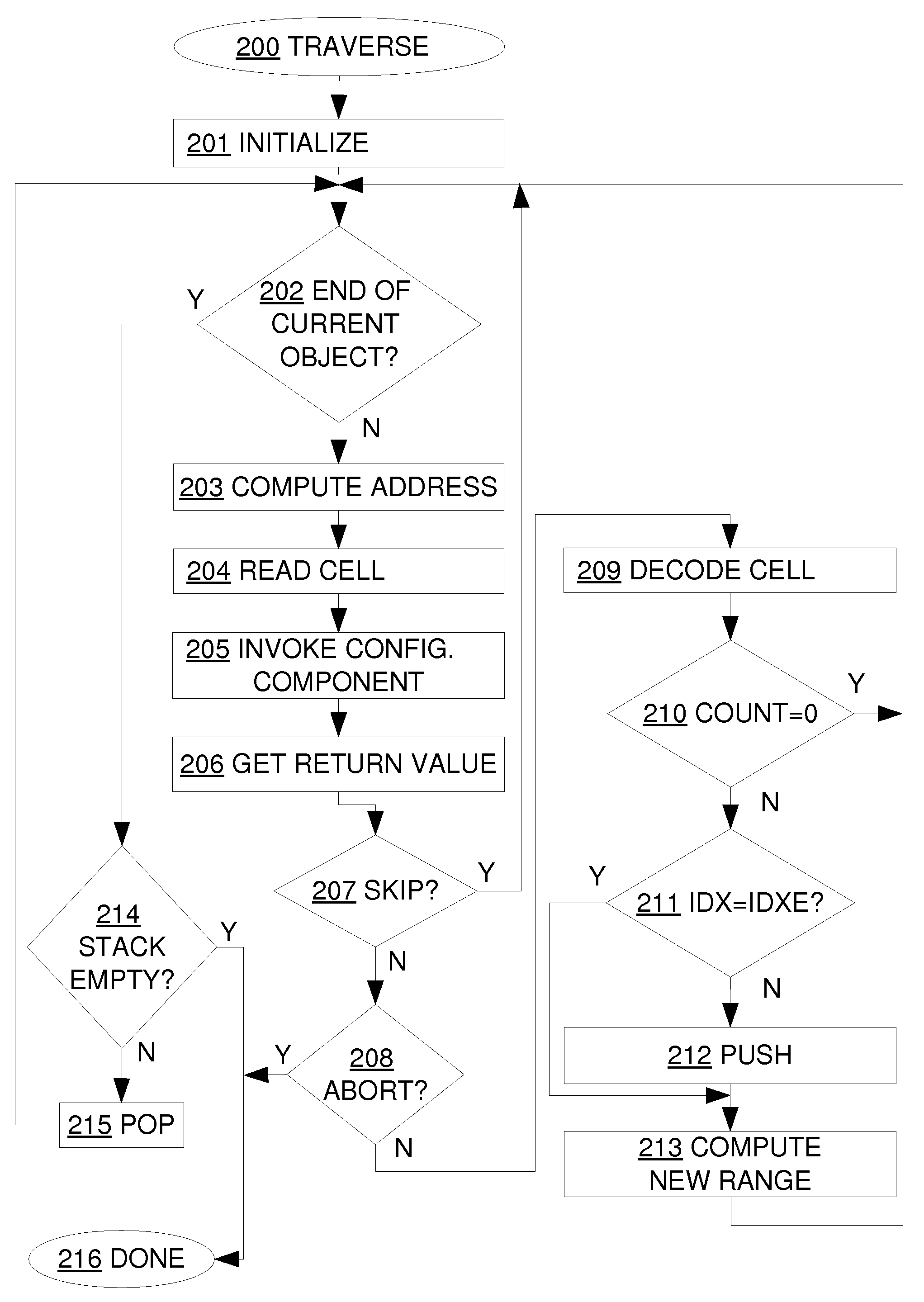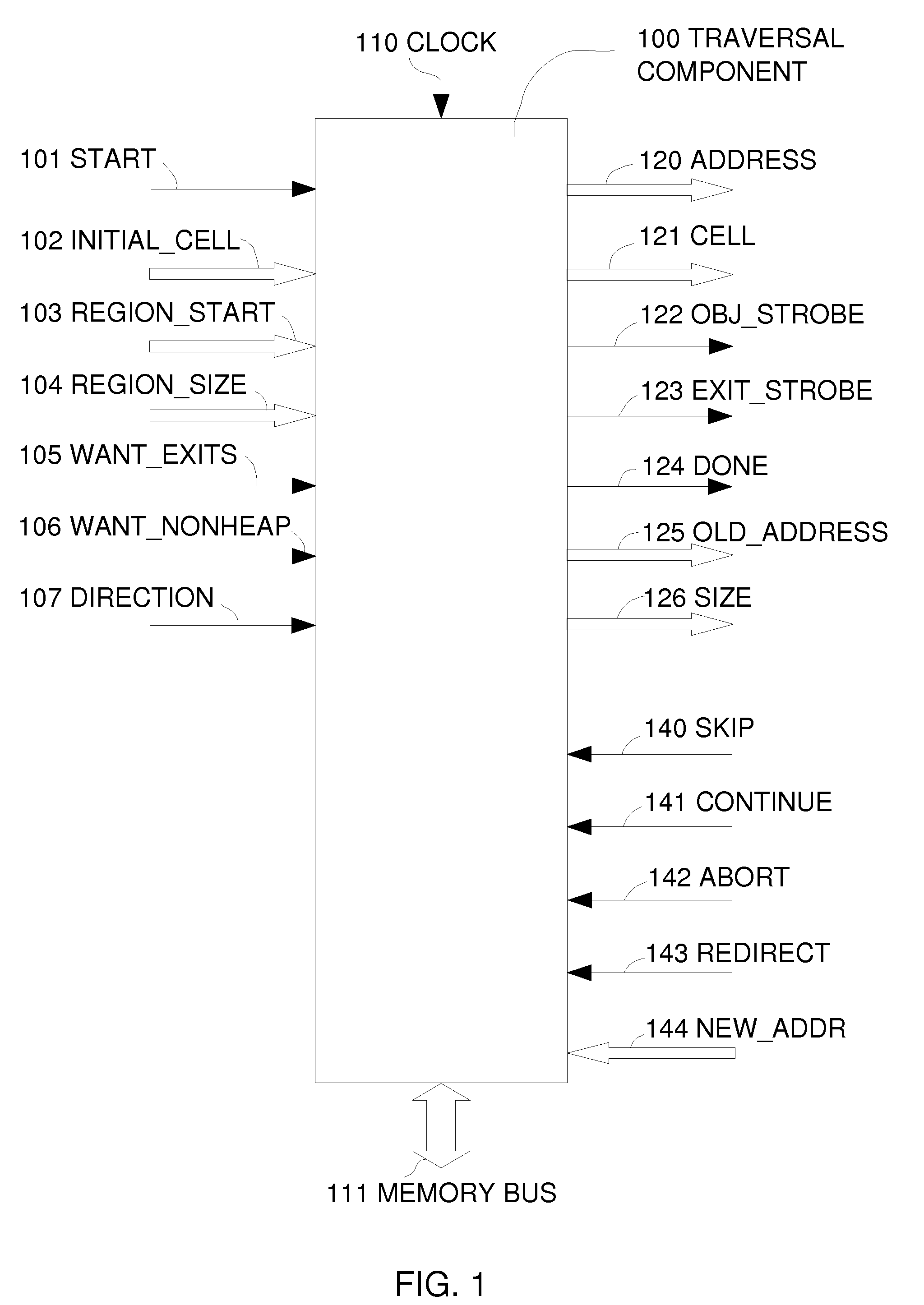Configurable object graph traversal with redirection for garbage collection
a technology of object graph and garbage collection, applied in the field of computer system object graph traversal with redirection, can solve the problems of few garbage collectors implemented in hardware to date to any substantial degree, power consumption will remain a major problem on such machines, and tasks likely to be performed by future mobile devices, such as voice control, speech-to-text conversion, automatic translation and intelligent information analysis may be quite compute intensive, etc., to achieve the effect of reducing power consumption, reducing power consumption, and being more wear
- Summary
- Abstract
- Description
- Claims
- Application Information
AI Technical Summary
Benefits of technology
Problems solved by technology
Method used
Image
Examples
Embodiment Construction
[0018]FIG. 1 illustrates an embodiment of a configurable traversal component (100) according to the present invention. (101) illustrates a means for starting the traversal. It could be implemented e.g. as a dedicated wire carrying a logic signal, or as a special code or packet transmitted or written over a control bus (any known bus architectures, serial or parallel, electrical or optical, synchronous or asynchronous, of any voltage or differentiality, proprietary or standard, could be used with the present invention). (102) illustrates a means for inputting the initial cell (or address of such cell) to the component (from some control logic that initiates the traversal). Cell here means something identifying an object; some cells may be self-contained (e.g., an integer with tag bits indicating it is an integer) or pointers to objects with descriptors. The type of the objects may be known a priori, or additional bits may be passed with an address to indicate the type of the object. ...
PUM
 Login to View More
Login to View More Abstract
Description
Claims
Application Information
 Login to View More
Login to View More - R&D
- Intellectual Property
- Life Sciences
- Materials
- Tech Scout
- Unparalleled Data Quality
- Higher Quality Content
- 60% Fewer Hallucinations
Browse by: Latest US Patents, China's latest patents, Technical Efficacy Thesaurus, Application Domain, Technology Topic, Popular Technical Reports.
© 2025 PatSnap. All rights reserved.Legal|Privacy policy|Modern Slavery Act Transparency Statement|Sitemap|About US| Contact US: help@patsnap.com



